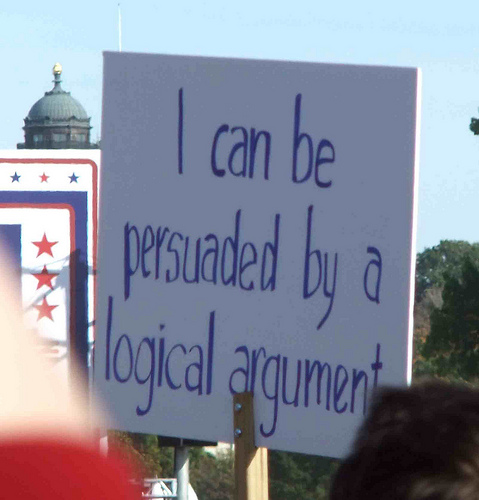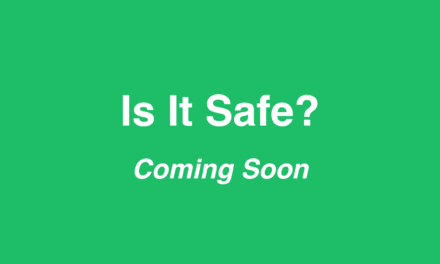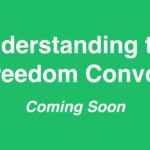How do you go about picking a side on an issue? You need to investigate the arguments on both sides. What are the claims of each side? Are they true? If I pick this side, is that better for me? Better for my family? Better for my country? What about the other side? Will circumstances change over the next year or two? If so, how would that affect my decision? It doesn’t take long for even a simple issue to become complicated.
Consider, for a moment, Climate Change. Many people hold strong opinions about this issue. In fact, it’s fair to say that we already have broad consensus. Nevertheless, let’s look at how people decide which side to take.
First, you’d need to look into the details. Climate models make most of the predictions about future impact on climate. So, let’s look at models for a moment.
Models

Photo by NASA Goddard Photo and Video
Many fields use models. Consider, as an example, the design of a new airplane.
Aerodynamic models are used to predict how the airplane will react in the air. When the airplane has been assembled and flight testing begins, its behavior is measured. If the measurements differ from the model’s predictions, an investigation is done to find out why. The results are then used to update the model. This makes the model’s predictions more accurate over time.
Eventually, we’ll hardly ever have to update the model–the model has become stable and its predictions are now reliable. That’s a great model.
Climate Change Models
Because of the prominent role of models in climate change, the accuracy of the models is critical. Over a period of many years, we could measure how accurately the models predict the future. But we don’t have a lot of time. The current predictions imply that we must act now. So, how do we evaluate their accuracy? One way is to start the models with the data we had, say, twenty years ago. Plug that data into the models and see if they predict what we see today. If not, then we need to find out why and modify our models accordingly.
Another challenge with models is their sensitivity to various input parameters. Suppose we have a parameter, X, that controls one aspect of the model’s behavior. Maybe it’s the predicted level of certain emissions over time. We would use, of course, our best educated guess on what value to use for that parameter. Now, suppose we increase the parameter by, say, five percent. If this dramatically changes the predictions of the model, then we know that we have to be really precise with that parameter. If we simply don’t know the value of the parameter that accurately, then the model won’t be able to give us useful results.
Are the climate change models stable? That is, are they accurately predicting the future so that we rarely need to update them? If so, then their predictions will be reliable. If not, then we know the models will be different soon, giving different results then. How different?
The Act of Picking a Side
Although we’ve only scratched the surface of models here, we already can see how difficult it is to get models correct and be confident in them. Despite that, almost nobody outside the science community has the time or expertise to evaluate the models that are so fundamental to climate change predictions. And yet, in the absence of such information, most of us hold strong opinions on climate change. So, how did we choose a side?
Fundamentally, picking a side is based on trust. In general, most of us trust the scientists that are building the climate models. We trust that they’ve properly validated the models so that we can rely on their predictions. We also trust that they entered appropriate data into the models. On top of that, we trust our friends and family, and perhaps various news organizations, political parties, and other institutions that matter to us. So if the scientists are predicting strong, disturbing climate change, and our friends and family agree, and the institutions we trust agree, then we support climate change.
On the other hand, some people don’t trust scientists, or perhaps their friends and family, and even their favorite political party, rejects climate change. Those people are likely to reject climate change.
Ironically, very few people outside the scientists actually have the facts needed to pick a side. This is true of almost all issues that confront us. So, although it might seem odd to pick a side based on who you trust, this is the case for most of the opinions most of us hold.
Another Example

Photo by iphonedigital
Consider the iPhone 5C at the center of the San Bernardino shootings in December, 2015. The FBI wanted Apple to create a new version of the iPhone’s operating system that would circumvent the privacy and security controls on the iPhone. Apple, citing the danger to their customers, objected in court.
Apple’s decision to object was very controversial and provoked strong opinions from many people. Some were outraged that a corporation would defy the government. Others were outraged that the government would launch what was felt to be an assault on the peoples’ rights to privacy and freedom from surveillance.
Returning to our theme of who one trusts, let’s consider how you might choose a side. If you see the government as a benevolent caretaker and you greatly fear terrorism, you’re likely to support the FBI. On the other hand, if you distrust the government, and feel terrorism is statistically insignificant compared to, say, your likelihood of dying in a car accident, then you’re less likely to yield your privacy to the government. Of course, people’s beliefs are rarely so clear cut. Instead, lots of little things can influence a person’s decision of which side to support. Emotions, especially, have a big influence. We need a better approach to picking a side.
Picking a Side—A Better Way

Photo by soukup
The logical position to take when confronted with a new issue is, “undecided”. Yes, the issue may resemble others you’ve dealt with in the past. For example, you might be big on privacy, or you might be big on fighting terrorism. It’s fair to lean in that direction initially. However, you should reserve judgement until you’ve had a chance to gather more information. That usually arrives quickly and frequently in the first few days after an issue first comes to prominence.
Even when you’ve had time to carefully evaluate the information you’ve encountered, and you’ve picked a side, remain open to change. There’s always the possibility that new information could dramatically alter the situation.
One benefit of this approach is that you can answer questions about why you hold your opinion. It’s surprising how many people can’t provide a rational answer to such questions.
Influencing Other People
Although some of us are content to merely pick a side, many of us wish to influence other people. To do so, you need to understand why others hold different opinions. Do they trust different people than you do? Do they have access to information that you don’t? Do you have information that they don’t? Once you have listened to why they hold their position, you will know how to about influencing them. It’s always possible, of course, that after a rational discussion, you may choose to modify your own position.
Many people, however, don’t hold their positions based on a careful analysis of the facts. If you ask these people why they hold their opinions, you’ll often hear an emotional response or one based on rhetoric. One thing that is unlikely to influence these people is figuratively yelling louder than they do. Yet that’s what most people seem to do. Sadly, logic may not work either. Your best chance for success is to talk to these people one-on-one and do your best, or retreat and place your efforts elsewhere where they’ll do more good.
At times, when confronted with such people, you may wonder how on earth your country functions through elections with such ill-informed people constituting the majority of voters. Just remember, as Winston Churchill said, democracy is the worst form of government except for all those other forms….
Top photo by nicubunu.photo










Recent Comments